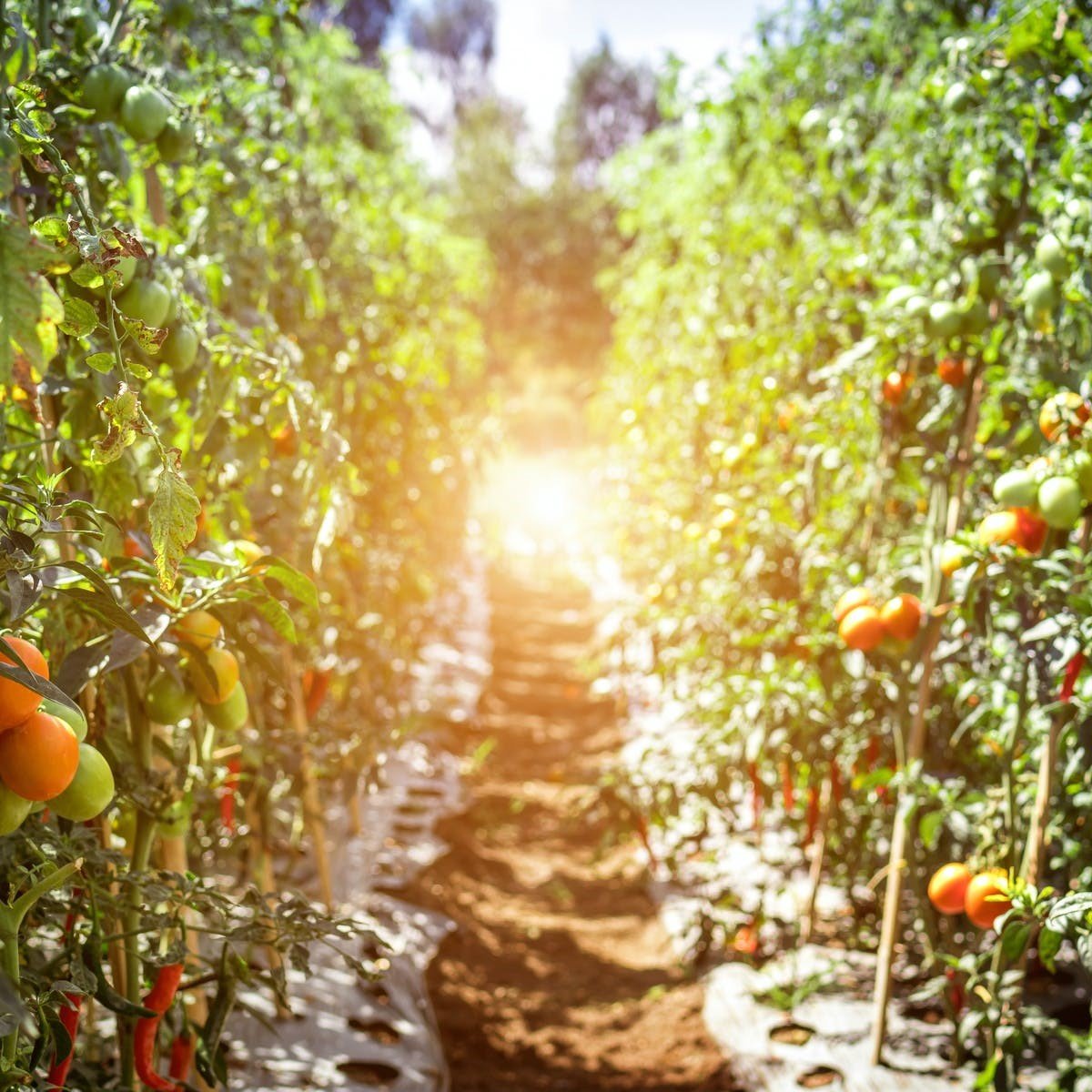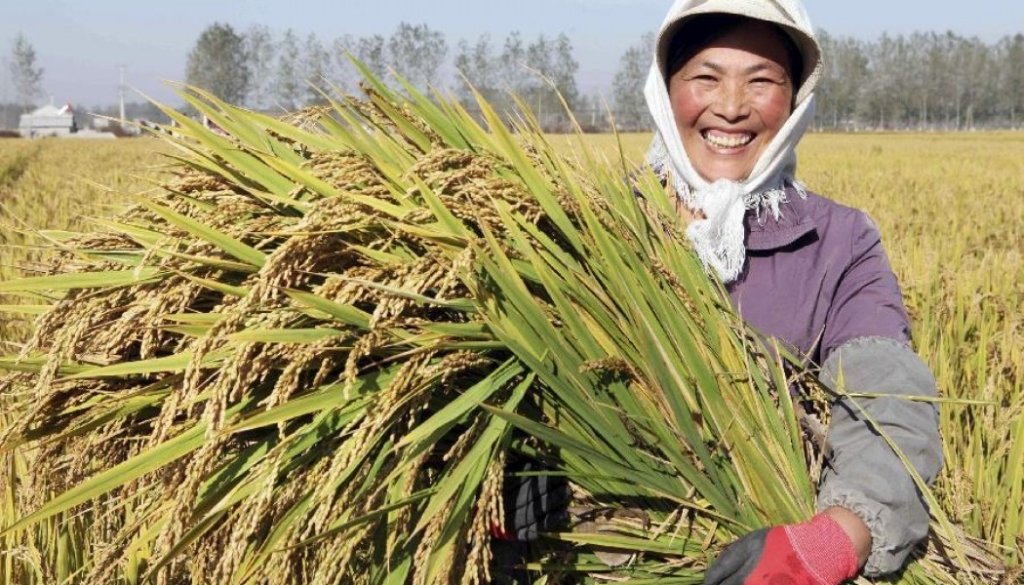 A comparative study of farming sectors of China and Pakistan
A comparative study of farming sectors of China and Pakistan
By Samiullah Najeeb
Agriculture is the most sensitive sector to climate change. The impacts of climate change and abnormal events such as rise in temperatures, extreme weather, drought, levels of carbon dioxide and sea result in a decrease in the quantity and the quality of food supplies.
Climate change affects not only the food production but also damages infrastructure, causes loss of asset; income and employment opportunities; increases risks to livelihood, health and nutrition, pressure on food prices and higher dependency on imports and food aid.
The change in weather pattern affects varieties, health and productivity of crops, livestock, fish and forests leading to loss of livelihoods, increase in hunger and malnutrition, in the rural and mountain regions, particularly in South Asia.
Agriculture is an excellent tool to evaluate poverty in any country. Small farmers make up an estimated 450–500 million or 85 per cent of the farming community worldwide.
China is among the few countries in the world which lays emphasis on the agriculture sector’s growth and wellbeing of the rural population. It could be gauged from the fact that for the 17th consecutive year, farmers’ issues remain China’s top priorities. The central document, released in February 2020, highlights poverty alleviation and improvement in weak rural linkages as the top on the agenda.
China is experiencing the world’s most significant and fastest-run urbanization. Over the past seven decades, the rural-urban population ratio has almost reduced to half. A significant fall in the number of farmers living below the poverty line has been observed. The number fell from 770 million over the past 40 years to 5.5 million.
According to the recently published policy document, the country will move towards winning the war against poverty by developing and improving rural infrastructure, services, the supply of essential agricultural commodities, and increasing the income of farmers, strengthening governance at the grassroots level, and improving weak rural linkages.
Not only the government, private companies like Alibaba, the e-commerce giant, are also introducing artificial intelligence in China to benefit farmers, reduce costs, and boost productivity. Farmworkers could now monitor and keep track from their smartphones whether insects are mumming off on their peach farms, or berries are ready to be collected. Other e-commerce giants like JD.com and NetEase are also dabbling in agriculture.
China has not only focused on the alleviation of income and human poverty, it has been able to narrow various disparities including gender, rural-urban, regional, ethnic and geographical disparities.

The goal this year in China is to bring all of the farmers out of poverty, and the most critical task of the government would instead work on stopping people from falling back into poverty, making it real with lasting results.
The policymakers in China know it still has a long way to go, and by completing these task does not mean to end poverty alleviation.
China is aiming to accomplish the goal of completing this year’s building of a moderately prosperous society in all respects, which also marks the country’s last year winning the battle against food insecurity and poverty.
Pakistan’s farming sector
Agriculture sector plays a central role in the economy of Pakistan. Majority of the population (62% rural population) is dependent directly or indirectly on this sector. According to the Economic Survey of the Finance Ministry for 2017-18, it contributes about 24 per cent to Gross Domestic Product (GDP) and absorbs 42.3 per cent of labour force and is the largest source of foreign exchange earnings.
According to the 6th Population and Housing Census of Pakistan 2017, the country’s population is growing at the rate of 2.4 per cent per annum. This rapid increase in population is increasing the demand for agricultural products. During 2017-18, the agriculture sector recorded a remarkable growth of 3.81 per cent but registered a sharp decline during the last two years, especially after the outbreak of Cornovirus pandemic.
The country has the world’s most significant adjoining irrigation system. Pakistan is one of the largest producers of wheat, cotton, sugarcane, mango, dates, oranges, and rice in the world. Some of the major crops like cotton, sugarcane, and rice, have a share of 6.5%, whereas minor crops, 2.3% in the country’s GDP. Fisheries and forestry add 0.4% and 0.2% to the GDP, respectively. The country is struggling with substantial levels of food insecurity despite its remarkable and increasing agricultural production.
Livestock having share of 58.92 per cent in agriculture and 11.11 per cent in GDP, recorded a growth of 3.76 per cent during 2017-18. The fishing sector has a share of 2.10 per cent in agriculture value addition and 0.40 per cent in GDP, grew at 1.63 per cent. Forestry sector having a share of 2.09 per cent in agriculture and 0.39 per cent in GDP posted a positive growth of 7.17 per cent against the negative growth of 2.37 per cent recorded in the same period last year.
Pakistan has two cropping seasons, “Kharif” being the first sowing season starting from April-June and is harvested during October-December. Rice, sugarcane, cotton, maize, moong, mash, bajra and jowar are “Kharif” crops. “Rabi”, the second sowing season, begins in October-December and is harvested in AprilMay. Wheat, gram, lentil (masoor), tobacco, rapeseed, barley and mustard are “Rabi” crops. Pakistan’s agricultural productivity is dependent upon the timely availability of water.
Despite being an agriculture economy and a major producer of wheat, 48 per cent population face malnutrition. According to the national nutrition survey 2018, about 40 per cent of the population faces food insecurity. Primarily, this is due to limited economic access by the poorest and most vulnerable group of the population – particularly women – to an adequate and diverse diet.
According to WFP report, the survey also showed Pakistan has the second-highest rate of malnutrition in the region with 18 per cent of children under 5 suffer from acute malnutrition, around 40 per cent of the children in the same age group are stunted and 29 per cent are underweight. All complementary feeding indicators are far below acceptable levels, only one in seven children aged 6–23 months receive a meal with minimum dietary diversity, with at least four different food groups, and around 82% children are deprived of the minimum number of the meals a day.
An average Pakistani household spends 50.8 per cent of monthly income on food. This makes them particularly vulnerable to shocks, including high food prices. The impact of climate change and population displacements exacerbate the situation, says WFP.
Nationwide, 7.3 million children of primary school age are out of school, 57 per cent of whom are girls.
The steady growth in population and agricultural production puts high demands on water resources. The agriculture sector is using most of the water resources of the country, whereas a minimal amount given for domestic and industrial use. The country also faces many natural and human-made catastrophes, earthquakes, droughts, landslides, which also have a large-scale effect on agricultural development.
In Pakistan farmers are facing multiple problems – from poor infrastructure and public services to exploitation by millers and middlemen in buying the crops at low rates being an agriculture country faces water scarcity problem due to increase in climate variability and extreme weather events which are negatively impacting water resources.
Faced with a challenging circumstance with critical problems from home and abroad and downward pressures on economic growth, it is of high significance for the government to strengthen the agricultural sector as well as to give full play to the role of agriculture and farmers.
Pakistan also needs a long-term mechanism and a strategy of rural revitalization to improve farmer’s quality of life and rural conditions, as.
To mitigate this challenge, National Water Policy should be formulated for water security on the basis of which the provincial governments can formulate their respective master plans and projects for water conservation, water developments and water management.
 Samiullah Najeeb is an environmentalist, currently working for a private Chinese firm in Shanghai. Previously he has worked as a research associate at the Pakistan Environmental Protection Agency (Pak-EPA) and Islamabad-based Zeeruk International. He hails from Gojal, Hunza, Gilgit-Baltistan and tweets: @samiullahnajeeb
Samiullah Najeeb is an environmentalist, currently working for a private Chinese firm in Shanghai. Previously he has worked as a research associate at the Pakistan Environmental Protection Agency (Pak-EPA) and Islamabad-based Zeeruk International. He hails from Gojal, Hunza, Gilgit-Baltistan and tweets: @samiullahnajeeb

The High Asia Herald is a member of High Asia Media Group — a window to High Asia and Central Asia

